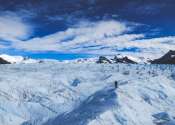A new approach to reduce the risk of losing solar-powered rovers on the moon
NASA and other space agencies worldwide periodically send robots and automated vehicles into space to explore planets and other celestial objects in our solar system. These missions can greatly improve our understanding of ...









